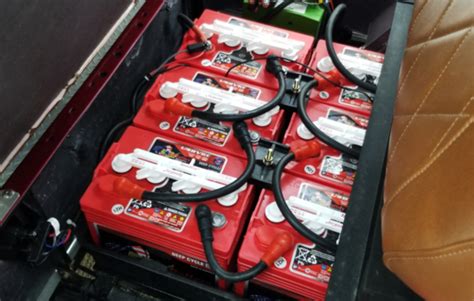Is Your Golf Cart Battery Charger Working Correctly?
Maintaining your golf cart's battery health is crucial for enjoying smooth, reliable rides. A significant part of this maintenance involves ensuring your golf cart battery charger is functioning correctly. A malfunctioning charger can lead to undercharged batteries, reduced performance, and even irreversible damage to your cart's power source. This article will guide you through identifying signs of a faulty charger and troubleshooting common problems.
How Do Golf Cart Battery Chargers Work?
Before diving into troubleshooting, let's briefly understand how these chargers operate. Golf cart batteries are typically deep-cycle lead-acid batteries requiring a specific charging process. Chargers deliver a controlled current to the batteries, gradually replenishing their charge. This process involves several stages:
- Bulk Charging: The initial stage where the charger delivers a high current to rapidly increase the battery voltage.
- Absorption Charging: Once the battery reaches a certain voltage, the charger reduces the current to maintain the voltage and fully charge the cells.
- Float Charging: A low-current trickle charge to maintain the battery at full capacity and prevent over-discharge.
Modern chargers often incorporate sophisticated electronics to manage these stages automatically, ensuring optimal charging performance and battery longevity.
Signs Your Golf Cart Battery Charger Isn't Working Correctly
Several indicators can suggest your charger is malfunctioning. Pay close attention to these warning signs:
- Slow or No Charging: The most obvious sign. If your batteries are taking excessively long to charge or aren't charging at all, the charger is likely the culprit.
- Overheating: Excessive heat generation from the charger is a serious problem, indicating potential internal issues and a risk of fire. Never ignore overheating.
- Unusual Noises: Clicking, buzzing, or humming sounds from the charger are indicative of internal component failure.
- Battery Not Holding a Charge: Even with seemingly sufficient charging time, if your batteries drain quickly, the charger might not be adequately charging them. This could point to a faulty charging profile or insufficient current delivery.
- Charger Lights Not Indicating Correct Charging Stage: Many chargers use indicator lights to show the charging stage. If these lights aren't behaving as expected (e.g., staying on "bulk charge" indefinitely), investigate further.
- Bulging or Leaking Batteries: This isn't directly a charger problem but can be a result of a faulty charger consistently overcharging the batteries.
What to Do if Your Golf Cart Battery Charger is Malfunctioning?
If you suspect your charger is failing, take the following steps:
- Check the Connections: Loose or corroded connections between the charger, the batteries, and the power supply can significantly impact charging performance. Clean and tighten all connections thoroughly.
- Inspect the Charger's Power Cord: Ensure the cord is not frayed or damaged. A faulty cord can prevent the charger from receiving sufficient power.
- Examine the Charger for Physical Damage: Check for any obvious signs of damage, such as cracks, burns, or loose components.
- Check the Battery Voltage: Use a multimeter to measure the battery voltage before and after charging. A significant difference indicates the charger is either not working or not fully charging the batteries.
- Consult the Charger's Manual: Your charger's manual should provide troubleshooting guidance and specifications for correct voltage and current readings.
- Contact a Professional: If you've exhausted basic troubleshooting and suspect a fault with the charger itself, seek professional assistance from a qualified golf cart repair technician or battery specialist.
How Often Should I Check My Golf Cart Battery Charger?
Regular inspection can prevent major problems. It's recommended to visually inspect your charger at least monthly, checking for any signs of damage or unusual behavior.
Can I Repair a Golf Cart Battery Charger Myself?
Unless you have significant electrical experience, it's generally not advisable to attempt to repair a golf cart battery charger yourself. Internal components often require specialized tools and knowledge to safely diagnose and replace. Attempting repairs without expertise can result in further damage or create a safety hazard.
How Long Should a Golf Cart Battery Charger Last?
The lifespan of a golf cart charger varies, depending on usage, maintenance, and quality. With proper care, a good-quality charger can last several years. However, like any electrical appliance, it will eventually wear out.
By following these guidelines and paying close attention to your golf cart's charging system, you can ensure your batteries remain in top condition, keeping your golf cart running smoothly for years to come. Remember, prevention is key. Regular inspection and proactive maintenance are crucial for maintaining the health of your golf cart and its battery system.

